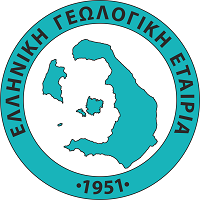Aquitard formations consisted principally of “soft”, ductile schists, crystalline or not, including,as a minor component, thin intercalations of “hard” rocks, like carbonates, quartzites, sandstones, quartz veinlets and the alike, though of low transmissibility, and thus very low yielding, are of great importance in some places where groundwater is demanded, especially in drought periods for irrigation of parks, and other uses. To these formations belong the “Athens Schists“ (from a long ago term, after R.Lepsius). Formations like these, during the orogenic processes and their structural finishing, responded, under the compressive stresses, with a resultant normal extension strain contemporary or late, by folding affecting mostly the “plastic”, ductile “soft”, low rigidity components, by fracturing their competent, more rigid, “hard” components ; a fracturing hydraulically well performing, particularly that in carbonates which are better dissoluble into the circulating water. Further, a very good measure of the yield of the unit saturation front under unit hydraulic head is the transmissibility of the formation, which in turn becomes a good decision making parameter in the exploitation of groundwater. Therefore, the search for the correlation between the transmissibility (T) of the “Athens Schist” and the percentage (Hr) of the brittle, “hard”, hydraulically well performing component arised as a hydrogeologically sound idea. A very good and positive relationship T vs. Hr has been revealed, with an increase of transmissibility (ΔT) of “Athens Schists” per unit increase (ΔΗr) of the percentage found in the range of values. 0.38Χ 10-2 lit/sec.m.Hr < ΔΤ < 0.72 X10-2 lit/sec.m.Hr Values of T are very low, as expected for a formation of the hydrolithology of the “Athens Schist”, and mostly in between 0.4Χ 10-2 lit/sec.m < Τ < 8.5 X10-2 lit/sec.m The percentage (Hr) of the hard member is commonly in the range of values 2.8% < Hr < 17.5% Δελτίο της Ελληνικής Γεωλογικής Εταιρίας, 2010 Bulletin of the Geological Society of Greece, 2010 Πρακτικά 12ου Διεθνούς Συνεδρίου Proceedings of the 12th International Congress Πάτρα, Μάιος 2010 Patras, May, 2010 Transmissibility is calculated under unsteady state conditions of pumping tests in boreholes, using the Jacob approach. Drawdown (s) with time (t) from start of pumping offers, with a very good accuracy, the appropriate linear segment on semi-logarithmic plot. Values of T from pumping test data representing longer pumping time and a more expanded cone of depression to wider rock mass showed recharge condition with delayed yield. However, dependence of T on Hr is again positive and very good. The percentage (Hr) of the “hard” rock component of the “Athens Schist” was measured on drilling cuttings and in outcrops of the formation ( excavations for buildings foundations etc ) in the closer vicinity of boreholes, and results found were well comparable to each other.
(EN)

